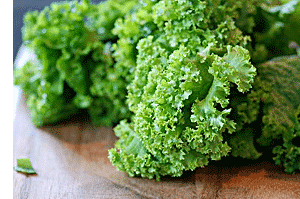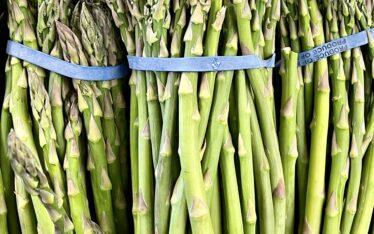 It’s late January, do you know where your resolutions are? A lot of people feel inspired by the New Year. It’s a clean slate, ripe with new possibilities. New Year’s resolutions can be a powerful way to change or achieve something that’s important to you but slightly less than half the people who make resolutions are still working on or maintaining them by June.1
It’s late January, do you know where your resolutions are? A lot of people feel inspired by the New Year. It’s a clean slate, ripe with new possibilities. New Year’s resolutions can be a powerful way to change or achieve something that’s important to you but slightly less than half the people who make resolutions are still working on or maintaining them by June.1
If you forgot where you put that list you made on January 1st don’t worry. Being in the business of helping people set and achieve goals I’d like to share a few tips I’ve learned along the way…the first tip is to get rid of the list! We love to make long lists but, when it comes to resolutions, less is definitely more. Having one specific goal is plenty. When we divide our focus it drains our energy and leaves us wondering where to begin. It’s easy to feel overwhelmed and give up on everything. Begin with just one thing. Once you’re doing that one thing really well, and seemingly without a lot of thought and effort – in other words, when that goal becomes a habit, you can move on to another one. Your goal should be small enough to do in a fixed period of time and specific enough that you know exactly what you have to do to meet your goal.
Once we have a really good goal, how do we stay the course? We start out well because we’re enthusiastic and that enthusiasm provides momentum. How do we keep ourselves motivated when we lose the momentum? To keep ourselves on track we have to make sure we’re keeping track. If you’re trying to make a dietary change try keeping a food log – then, when you miss the mark, it’s right there on the page and you can make a correction at the next meal, not the next day. In this way you can keep yourself moving forward. You’re not “ON” or “OFF”, you’re just making a series of course corrections.
Telling others about our resolutions makes us accountable to them, which raises the stakes for us and helps us garner support. When we bite off something really difficult, like trying to quit smoking, we need all the support we can get. We might have a family member we can ask to check in with us every day or a friend we can call when we get the urge to smoke. It’s important to take good care of yourself when you’re working on a challenging change. Giving yourself small rewards along the way helps. Achieving long term change is not a linear process – don’t wait for the finish line to celebrate your accomplishments.
Anticipating the challenges that go along with change means having a Plan B. If you resolve to exercise four times a week, what do you plan to do when have an incredibly busy week or when you catch a cold? An exercise DVD to use at home could serve as a backup when time is short, and doing a minimal stretching routine or some gentle yoga can keep you moving when you’re not feeling up to par. If you’re trying to give up that glass of wine or beer with dinner, what are you planning to do instead to help yourself unwind and relax after a busy day? Whether it be listening to some relaxing music or going for a walk, don’t rely on sheer willpower to accomplish your goals.
Change is an incredibly creative process and I am continually amazed at my clients’ creativity and how it aids them in their success.
A few years ago, I was working with a Mom who wanted to lose the “baby weight” she had never shed after having her kids. I taught her about the energy density of foods and how eating a larger volume of foods that have a low energy density can fill you up, causing you to consume fewer calories overall. Here is what she did. She cooked broccoli – lots of it! Every night before she sat down to eat dinner with her family she sat down and ate as much broccoli as she wanted. Then, when she ate dinner with her family, she found herself eating smaller portions of everything else because she was still full from the broccoli! In three months she lost her extra weight without ever feeling hungry or deprived. Creative and successful! Now, I’m not going to write The Broccoli Diet book anytime soon, nor am I suggesting that you try the broccoli diet for yourself. This strategy worked for one individual because she designed it for herself around her own preferences and, for her, it was a simple solution.
Earlier this month I gave a talk called, “Rethinking Resolutions”. One of the women who attended told me that she resolved to stop saying mean things to her husband. She decided that every time she felt like saying something mean she would try to make a joke instead. When I saw her again recently I asked her how the anti-sniping campaign was going. She said she told her husband about it and was keeping track of how she was doing on her calendar. She found that she was nice for the first couple of days but lately had fallen back into the old pattern. After thinking about it she came up with the idea of putting a note on her refrigerator – it’s hard to hide from a big note on your refrigerator!
So remember, one small, specific goal is plenty. Endeavor to keep yourself on track by keeping track, enlisting the support of others, rewarding yourself along the way and having a Plan B. Lastly, be creative! Change is hard work. You may need to try a few different approaches until you find one that works for you. Try not to judge yourself and don’t be tempted to give up on your goal if it’s really important to you. When we use our creativity to attack our goals in a way that really resonates with us, the hard work of change seems, well, a little easier.
1. “Auld Lang Syne: Success Predictors, Change Processes and Self Reported Outcomes of New Year’s Resolvers and Nonresolvers”, by John C. Norcross, Marci D. Mrykalo, Matthew D. Blagys, (University of Scranton). Journal of Clinical Psychology, Volume 58, Issue 4
Food Focus: Barley
 Barley is an ancient grain, having been domesticated even before wheat was cultivated. NOTE: Like wheat, barley contains gluten so it is not a good choice for people on gluten-free diets. Much of the barley grown in the United States today is used in the production of beer.
Barley is an ancient grain, having been domesticated even before wheat was cultivated. NOTE: Like wheat, barley contains gluten so it is not a good choice for people on gluten-free diets. Much of the barley grown in the United States today is used in the production of beer.
Barley offers a powerful nutritional punch delivering many minerals and plenty of important B vitamins including niacin and folic acid. Barley is one of my favorite winter grains because it is a perfect addition to warming soups and stews.
Of the many types of barley being cultivated today, the most common form has a hard, fibrous hull that we can’t eat. This type of barley can only be used for sprouting to make barley grass (look for information on sprouting and wheat grasses in the upcoming spring newsletter).
When barley is processed to remove its fibrous hull it is called whole or hulled barley. This type of barley is typically available only in health shops and natural foods markets. Most barley is processed further to remove the ends of the kernel, creating a round shape – this is pearled barley and it can be found on most supermarket shelves.
Because pearled barley has had its germ and much of the bran around the endosperm removed, it is lower in vitamins, minerals and fiber than hulled barley. The good news is the cooking time for pearled barley is about 45 minutes as opposed to 90 minutes for the hulled. Despite the processing, pearled barley is still 50% higher in soluble fiber than oatmeal. Soluble fiber helps the body remove cholesterol and balance hormone and blood sugar levels.
Like other whole grains hulled or pearled barley can be eaten as breakfast porridge. Better yet, cook an extra quantity at dinner and reheat leftovers the next day with a dash of cinnamon and maple syrup.
Health Food shops also sell barley flakes and barley flour. Barley flakes are made by rolling hulled barley in a process similar to the way that oatmeal is made. In fact, barley flakes look exactly like rolled oats. In addition to breakfast cereal, barley flakes can be used for homemade granola like the recipe below, a huge favorite in our house. Or use them in baked goods like breads, muffins and cookies. Try substituting barley flour for some of the all purpose or whole grain flours in your favorite recipes (but not more than 50%) for a nuttier taste and a nutrition boost.
If you haven’t ever cooked barley or used barley flakes or flour this is a wonderful season to try it. This warming grain is satisfying and delicious.
Recipes of the Season
 Barley Stew with Leeks, Mushrooms and Greens
Barley Stew with Leeks, Mushrooms and Greens
A friend sent me this recipe the same week my CSA delivery contained two beautiful heads of kale. My whole family enjoyed it — even the non-kale eaters!
6 servings
Recipe by the Bon Appetit Test Kitchen
Photograph by Misha Gravenor
December 2009
Ingredients:
• 1 tablespoon olive oil, divided
• 1 1/2 cups chopped leeks (about 2 small stalks; white and pale green parts only)
• 1 8-ounce container sliced crimini (baby bella) mushrooms
• 2 garlic cloves, pressed
• 2 1/4 teaspoons minced fresh rosemary
• 1 14.5-ounce can diced tomatoes in juice
• 1 cup pearl barley
• 4 cups (or more) vegetable broth
• 1 bunch kale (about 8 ounces), trimmed, center stalks removed, leaves coarsely chopped (about 8 cups packed)
Preparation:
• Heat oil in heavy large pot over medium heat. Add leeks; sprinkle with salt and pepper and sauté until leeks begin to soften, stirring often, about 5 minutes. Add mushrooms, garlic, and rosemary; increase heat to medium-high and sauté until mushrooms soften and begin to brown, stirring often, about 7 minutes. Add tomatoes with juice; stir 1 minute. Add barley and 4 cups broth; bring to boil. Reduce heat to low, cover, and simmer until barley is almost tender, about 20 minutes. Add kale; stir until wilted, about 1 minute. Cover and simmer until kale and barley are tender, adding more broth by 1/4 cupfuls as needed for desired stew consistency, about 10 minutes.
 Homemade Granola Bars
Homemade Granola Bars
Adapted from Fred Edrissi’s recipe for Granola Energy Bars in “Alive” magazine, September 2001
These bars are packed with healthy calories and will sustain you for a long time! They can provide a quick breakfast, a high energy snack to bridge a long between meal gap or, cut smaller, a lunchbox treat. I use whatever nuts (and sometimes seeds) I have in my pantry (I made these with cashews and pecans) and the same substitutions can be made with the dried fruits although I adore figs!
Ingredients:
2 cups barley flakes
1 cup mixed nuts , coarsely chopped
1/2 cup dried black mission figs, chopped
1/2 cup dried organic cranberries
1 free-range egg
1 tsp. vanilla extract
1 tsp. ground cinnamon
1/2 teaspoon sea salt
1/2 cup grass fed butter, melted
1/2 cup Rapadura (natural cane sugar)
Directions:
Preheat oven to 375
In a large bowl, combine barley flakes, nuts, figs and cranberries. In a small bowl, beat egg with vanilla, cinnamon and sea salt. Melt butter in a small saucepan and add sugar. Mix thoroughly and pour over the granola mixture; mix until temperate. Add egg mixture and mix well.
Put mixture in an 8 by 8 baking dish and bake for 8 minutes.
Remove from oven and mix again to ensure the butter hasn’t settled on the bottom. When cool enough, wet hands, cover granola with wax paper and press it firmly into the pan.
Refrigerate and cut into bars..
 Braised Carrots adapted from “The Healthy Jewish Cookbook” by Michael Van Straten
Braised Carrots adapted from “The Healthy Jewish Cookbook” by Michael Van Straten
Winter is all about the root veggies and this belly button carrot recipe is one of our favorites. When you cut off the very top of the carrot, where it connects to the green leaves, you are losing the part of the carrot with the greatest energy – the “belly button” if you will. This recipe uses some of the carrot greens which are delicious and taste very much like the carrot!
Ingredients:
3 Tablespoons olive oil
8 young carrots with the bottom inch of their leaves attached
1 cup of vegetable or chicken broth
1/4 cup raisins
2 tablespoons finely chopped flat leaf parsley
Directions:
Heat the olive oil in a large frying pan and the sauté the carrots gently until golden – about 6 minutes. Add enough broth to just cover carrots. Add the raisins. Cover and simmer until the carrots are tender – about 15 minutes.
Uncover and bring to a brisk boil until most the liquid has evaporated. Garnish with parsley.
 Happy Lemon Boats, adapted from “Naked Chocolate” by David Wolfe and Shazzie
Happy Lemon Boats, adapted from “Naked Chocolate” by David Wolfe and Shazzie
This last recipe comes with Valentine’s Day in mind. A male client recently said to me that everything that tastes good is bad for you…false!! This raw chocolate recipe tastes decadently delicious and you can indulge and truly nourish your body at the same time. If you’re a chocolate lover and you’d like to learn more about raw chocolate see my February 2009 newsletter.
My 15-year-old son, Willie, a chocolate connoisseur, made and photographed these happy boats.
Ingredients:
1/2 cup chocolate powder (crushed cocoa beans or nibs)
3 lemons
1 avocado, stoned and pealed
1/2 cup carob powder
10 dates, stoned and soaked overnight
4 Tablespoons raw agave nectar
Directions:
Cut two of the lemons in half, lengthways. Scoop the flesh out, being careful to keep the skins intact. Cut a tiny strip off the bottom of each half so the lemon will sit flat on the plate without falling over.
Zest or finely chop these cut off pieces and add them to your blender or vita mix jug. Add a quarter of the lemon flesh to the blender jug. Reserve the rest of the lemon flesh until you are done with lemon boats.
Blend the ingredients in the blender jug with the avocado, carob powder, dates and agave. Taste the mixture. If it tastes too bitter you can add some more agave nectar. We added more lemon to ours because we love the lemon/chocolate combination.
Divide the mixture into the four lemon halves.
Cut the third lemon to make sails and top each boat with a sail.
Note: When we made this we had enough stuffing for six lemon halves…it all depends on the size of your lemons!











Recent Comments